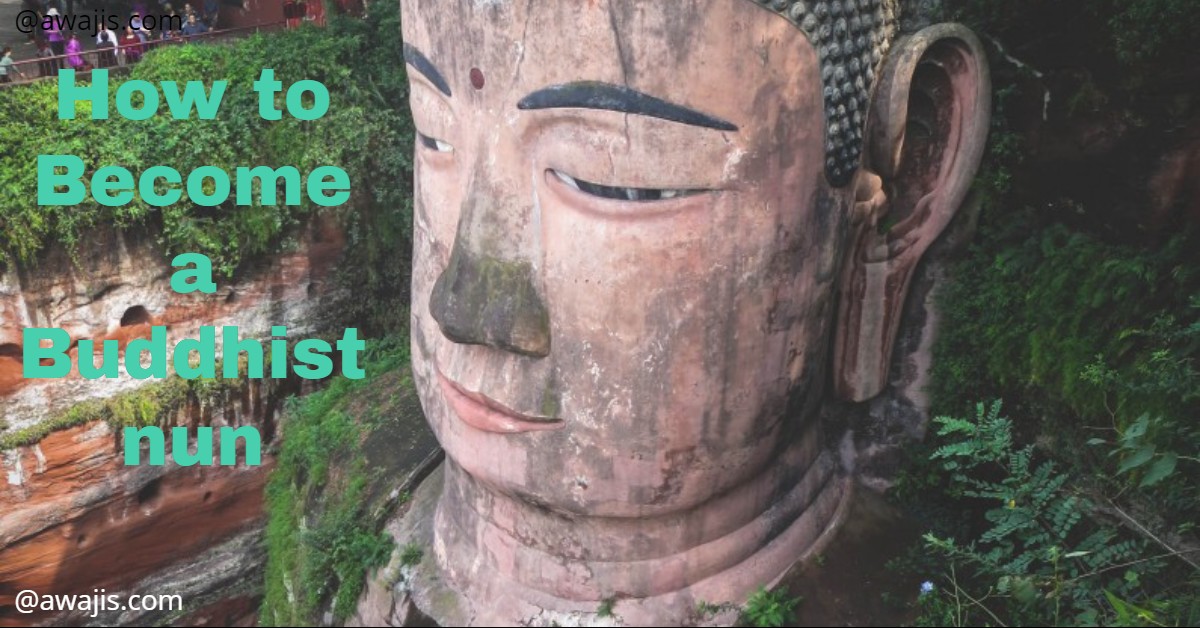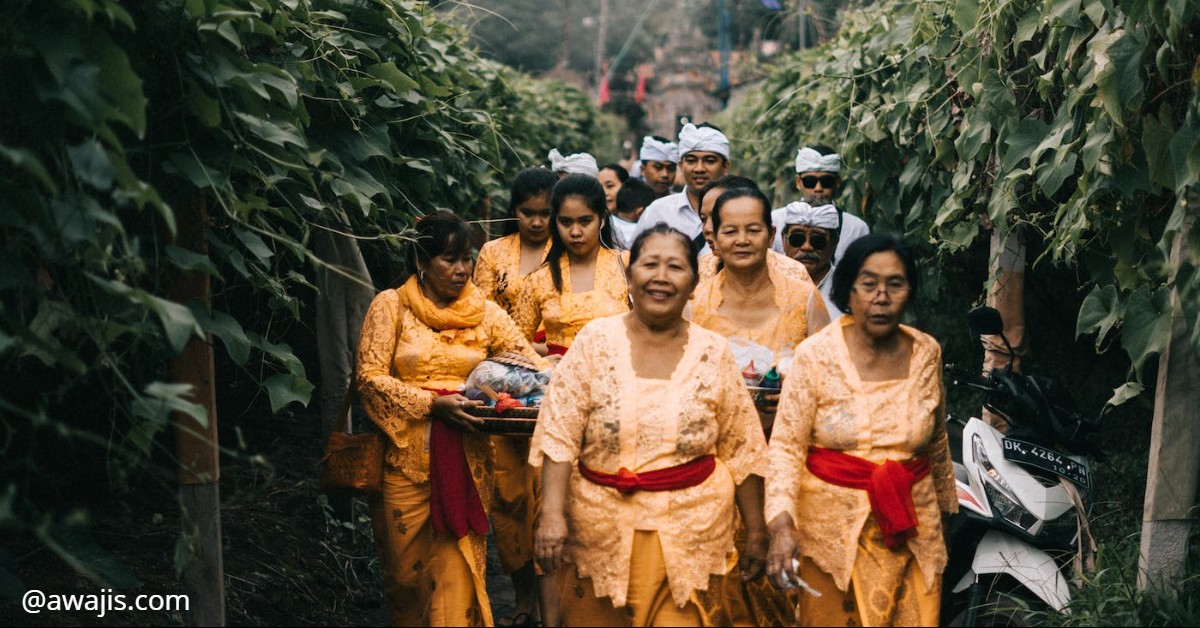How to Become a Buddhist Nun
A Buddhist nun’s life is of great significance and service to others. Here in this article, we will be talking about how to become a Buddhist nun.
Thousands of monks and nuns in Asia have worked tirelessly over the past two thousand and five hundred years to keep the monastic tradition that the Buddha began alive and well. While becoming a Buddhist nun has many positive effects, it also comes with significant responsibilities.
How to Become a Buddhist nun

Siddhartha Gautama (later known as the Buddha) admitted female students into his monastic order around 500 B.C.E. Those who desired to dedicate their lives to Buddhism and take vows in the five precepts—not to kill, steal, lie, use intoxicants, or commit sexual misconduct—may become nuns, or bhikkhuni, just as they could become monks or bhikkhu. Different schools of Buddhism have developed over time, each with its own set of adherents and initiation ceremonies. Currently, women are allowed to become nuns in the Theravadan and Mahayana schools of Buddhism, but this was not always the case; the Theravadan tradition did not have nuns for approximately 800 years.
There are three stages or steps in Buddhist practice. The first stage is to let go of attachment to life. The eradication of desire and attachment to this samsara is the second level. Then, in the third stage, self-esteem is eradicated.
Become a Buddhist nun
Understanding Buddhist Teachings
Before electing to join the ordained order, one must be well-versed in the Buddha’s teachings, particularly the Four Noble Truths, the Eightfold Path, and the Stages of the Path to Enlightenment (lam-rim). Typically, a student who seeks ordination has done so after spending several years learning from an experienced mentor.
If you’re just getting started with Dharma, it’s a good idea to find a local center or study group where you may learn the basics, connect with like-minded people, and receive instruction from an experienced teacher.
Having a Spiritual Advisor
We need a teacher and a guide in any endeavor. This is especially true on the spiritual path, where we might gain the insight we need from a knowledgeable guide. Our mentor can set us up for success in the monastic life, and they’ll know when we’re ready to accept the vows of ordination. To be ordained, you must have the blessing of a teacher.
Starting on the Buddhist Path
Give your spirituality the time it deserves to grow. If you have come to appreciate the wisdom of the Buddha’s teachings and agree that they align with your spiritual growth, you can take “refuge” and formally become a Buddhist.
Taking “lay vows,” or temporary vows of celibacy before ordination, is a common way for students to prepare for the more permanent commitments of a life of vows. Think carefully about whether or not you would enjoy a life of religious service as a nun.
Regarding Ordination
If you can, you should spend some time in a monastery and talk to the monks and nuns there to learn more about their way of life. Talk to monks and nuns who have lived by vows. They can give you good advice on how to keep your promise. The monastic community is thrilled by your decision to enter the monastic life and is eager to support your ordination. Internet articles and resources are also accessible.
Plans are in the works to create programs where lay practitioners thinking about ordination might learn about and practice aspects of monastic life in a safe, secluded setting.
A Commitment to Life
When considering becoming a Buddhist nun, carefully weigh the benefits and drawbacks of this lifelong commitment. It is possible to become a monk for a short period at some Asian monasteries (such as in Thailand) through short-term ordination procedures that are typically reserved for men.
But in Tibetan culture, vows are taken seriously and meant to last a lifetime. And while it is not unheard of for a person to take vows only to renounce them and return to a secular lifestyle, it is not encouraged. The vows are made with the firm intention of being upheld till death.
Taking Care of Yourself
When one enters a monastic community, food, clothes, shelter, and medicine are traditionally provided. However, because Buddhism is still in its early stages in many regions of the world, resources to support monastic groups are limited. Those pursuing ordination must consider what services are available for support after ordination.
In exchange for their basic needs, many monks and nuns serve their local dharma groups. The International Mahayana Institute also offers assistance based on available resources. Working in worldly employment to support themselves is against the Vinaya (rule of conduct) for monks and nuns. Those wishing to become monks or nuns should address their situation with their teacher or a senior Sangha member to ensure their stability once ordained.
Being a Member of a Group
By taking the vows of a Buddhist monk, one enters into a fellowship known as the Sangha. The community members dedicate their time to learning and applying the Buddha’s teachings and spreading them to others whenever feasible.

Upon receiving one’s ordination, a monk or nun will often enter a vow of silence and seclusion and remain in the community for at least five years. However, this is not always achievable because many regions still develop monastic communities. One can also choose to live at a dharma center, where they will be cared for and protected by their teachers. Before entering the monastic order, one should explore the various options available.
Sharing a home with others necessitates a mutual exchange of material goods, ideas, customs, and characters. Many of us grew up in cultures that value individuality, which makes it hard to learn how to live with other people. The Vinaya, or code of conduct for monastic life, is very clear about how we should act in the community. This is to protect our ordination.
Health and government requirements
Anyone, male or female, can become an ordained Buddhist, but they have to meet certain health requirements first. You must be in good physical and mental health to meet the standards. Due to close quarters and interactions with other monks and nuns, you must be free of infectious, chronic, venereal, and mental disorders.
Before someone can be ordained, they must answer 24 health-related questions to ensure they are in good standing. You also need your parents’ blessing to be free from governmental obligations, as they traditionally present the candidate for ordination.
Buddhist Blessings.
Like most other religions, Buddhism has particular rites of passage for its believers, from primitive tribes to modern nations. Despite minor variations depending on the Buddhist sect, these rites offer a way for people to commit to the path of the Buddha’s teachings. Buddhist rites of passage occur in stages during one’s life and spiritual growth journey.
Rituals of Passage during the Buddha’s Time.
The Buddha welcomed non-Brahmins into his monastic order when he started spreading his teachings on enlightenment and the road to that revered condition. Taking a promise not to kill, steal, be unchaste, drink alcohol, or lie was all needed.
Even though he first only permitted male monks (bhikkus) to join the monastic order, he soon welcomed women (bhikkhunis). He then dispatched his disciples on an unending mission to propagate the Dharma’s teachings and lead others to enlightenment.
Men’s Monastic Rites of Passage
There are two levels of ordination for men, lower and higher, determined by age and experience. One must be in good health and free of infectious diseases, as assessed by a series of particular inquiries. The prerequisite for lesser ordination is merely the renunciation of secular life.
This includes giving up personal property, shaving the head, learning the Buddha’s teachings, and adopting a monastic lifestyle.
Women’s Monastic Rites of Passage
Though there was no difference in Buddhist practice at first, numerous types and kinds of Buddhism have emerged since the Buddha’s time and continue to grow. Women were always welcome in the Mahayana monastic order. In the Theravada tradition, women were not allowed to be ordained for about 800 years. This changed in the late 20th century.
Women must go through three stages of ordination: renunciation of secular life, training and preparation for ordination, and final ordination. Buddhist nuns are distinguished by their level of education (novice or experienced), who ordained them, and when they were ordained. Nuns must also accept 34 vows in addition to the initial 277 for men, for a total of 311 precepts for full female ordination.

Conclusion
We hope this article on how to become a Buddhist nun has inspired you to take up that mantle and start your journey of becoming a Buddhist nun. Don’t forget to share this with friends and loved ones.
Additional Read:
Why I Left the Seventh-Day Adventist Church (Research 2025)
Hebrew Symbols and Meaning (Alphabets and Numerical Values)
Why Stay Away from the Book of Enoch
Sudden Death Loss of a Son Poems and Quotes